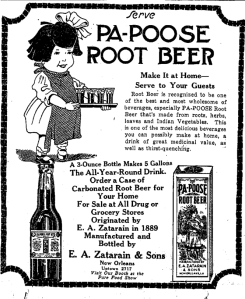Usually for me, I start with a character, and usually, the character brings a setting along naturally. Rachel was a root beer fan on a spaceship. Olivia was a woman looking for a buddy to bundle up with during the coming blizzard, and it was easy to set her in upstate New York. Perz was a paranormal plumber, and my huge mistake with that story was not putting her in a setting with plumbing problems, but rather, in a cave.
For the last few weeks, I’ve been talking about putting a setting first, as a place that will naturally produce a lot of interesting characters. Maybe it’s a wedding – you’ve got confident wedding planners, unhappy bridesmaids, dashing men dressed like 19th century robber barons! (First, second and third parts.)
Or maybe you’ve rented a gentleman in Japan. This isn’t setting so much as it is situational, but you could have an interesting artist who might be entertaining himself by renting himself out, or perhaps you’ve got a Good Boy who was suddenly laid off at age 45, and needed a little gig to tide him over until he can find a better position.
So, these are the building blocks I usually don’t have problems with: a character, and a setting/situation. I’ve got a protagonist – now I need to use the setting/situation to create an antagonist – because it’s very hard to write a story that’s all in one character’s head. It’s so much easier when you have another character to add interest, input and plot complications.
When I first started writing, I would usually start with just one person, write a few pages, and then run out of gas. Nothing was happening!
Later, I would sometimes start with a team – three best friends, for example. However, they’d usually work well together, and I’d run out of steam after a few more pages. It was better than one person, but without conflict, nothing gets done.

“All you need,” Rachel said, “Is some water, some yeast, and this little bottle of magic!” (Image via Wikimedia Commons)
Now, I’m at the stage where I often think of the second person as the Villain of the piece. If I ever go back to Rachel and her quest for the perfect root beer, I think I’d introduce a person who is very concerned about health and safety regulations. Someone who wouldn’t want wild yeast on a spaceship, or exploding pop bottles. The story as I originally envisioned it was Rachel vs. the Root Beer. And if you have ever made homemade root beer, I think you’d find that story pleasant. But most people would prefer a story about Rachel vs. Ms. Pratchett – the atmosphere engineer who is trying to track down this sudden influx of carbon dioxide in the system. With the old story, you mix up the root beer, add yeast, wait, and then things happen. Maybe you enjoy your root beer, maybe you accidentally paint the ceiling of the spaceship brown with an over-carbonated bottle of the stuff. That’s about the whole story.
With this new story, you can have a successful root beer experiment. You can escalate the action by hiding the root beer . . . even operating a speakeasy for your fellow shipmates. There could be a raid on your cabin, and a showdown with Ms. Pratchett. Then, maybe the friendly head chef takes Rachel under his handsome wing, and allows her to create root beer legally for all. And we all live happily ever after!
We have a plot! But actually, now I’m getting into the territory of tomorrow’s blogpost. So, I’ll stop speculating and ask you to tune in Sunday for one more exciting element that you need to start a story!


After McDaniel, my approach to starting a story changed. I still start with a premise, a what-if, and my next step is still determining what kind of protagonist would best help me illustrate this what-if. The change is that Step 3 is now determining what that protagonist wants, what her goal is. Step five is a two-parter: what obstacles might keep her from reaching her goal–both internal and external. Then, what kind of antagonist can best create these obstacles?
I think this is also very true — you need to think about the motivations of the characters. But for some reason, it just doesn’t click with me. (-: Perhaps because I don’t understand motivations in real life very well. For me, the motivation feels like it should come later. And of course, after I’ve written a story, I am too lazy to go back and change things. If the character comes with an intrinsic motivation, I do much better. If I have to sit and think about motivations, I usually abandon the character and often the story.
(-: Some day, I will be at the level where I can think about motivation rationally and construct story around it!
Pingback: Michaeline: One More Thing You Need To Start a Story – Eight Ladies Writing
I started this Phoebe trilogy with just the character and the setting, and I hope I never do that again. Book 3 went pretty well—maybe because by then I got the hang of it—but I had the devil of a time working in an antagonist, and I’m not sure I succeeded all that well. I’m not sorry I went thee—that character had been living with me for years—but it’s just a lot easier to work with if you know what her motivation is right off the start. At least, for me it is.
It’s so fun to see the different ways we do things! What do you usually start with? What makes you stop and think, “Oh, I gotta sit down and start writing this.”? I bet if we asked a hundred different writers, we’d get 110 different answers.